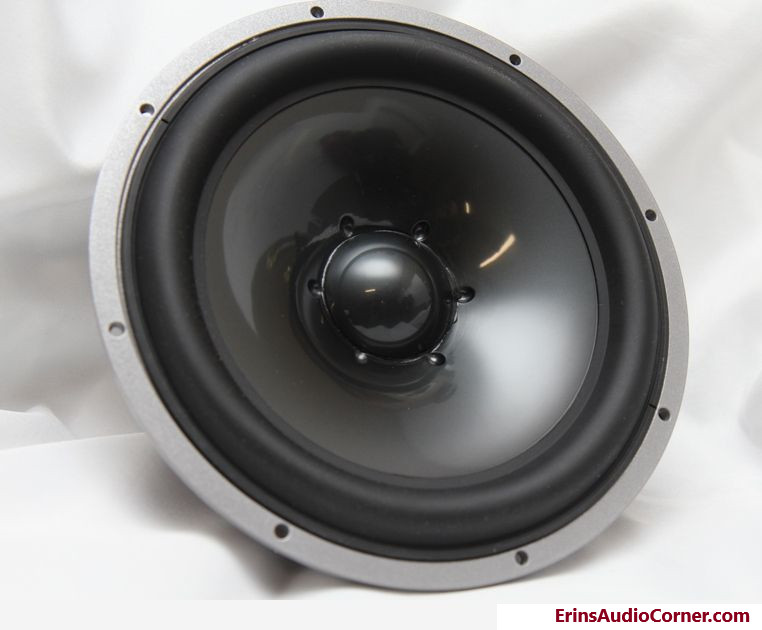Note: While this driver is no longer made, however, to this day I still think it’s one of the best pure midbass drivers ever produced. And that’s why I’m posting this review.
Up for test is JL Audio’s ZR800-CW 8″ Midbass.

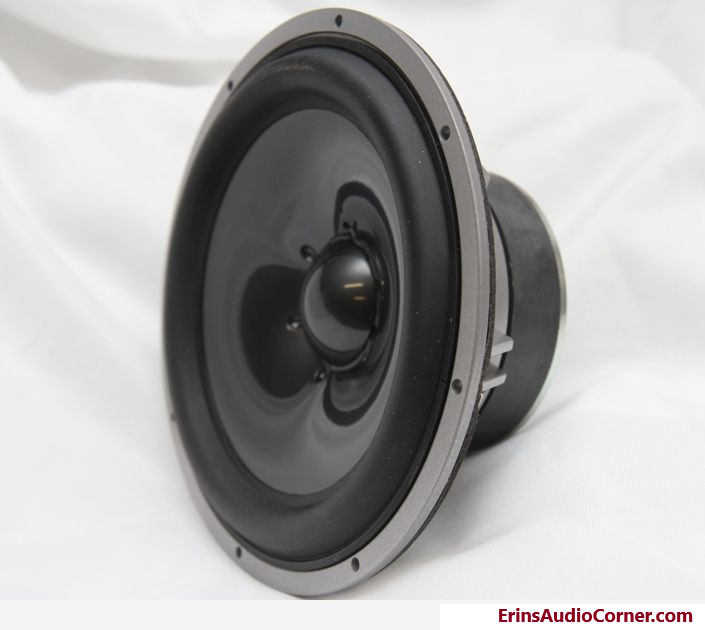


Small Signal Parameters
Results as measured via Dayton’s DATs measurement tool. Which is a very little handy tool to have. 😉
- f(s)= 56.52 Hz
- R(e)= 5.35 Ohms
- Z(max)= 54.75 Ohms
- Q(ms)= 11.113
- Q(es)= 1.205
- Q(ts)= 1.087
- V(as)= 14.310 liters (0.505 cubic feet)
- L(e)= 0.90 mH
- n(0)= 0.20 %
- SPL= 85.21 1W/1m
- M(ms)= 31.46 grams
- C(ms)= 0.25 mm/N
- BL= 7.05
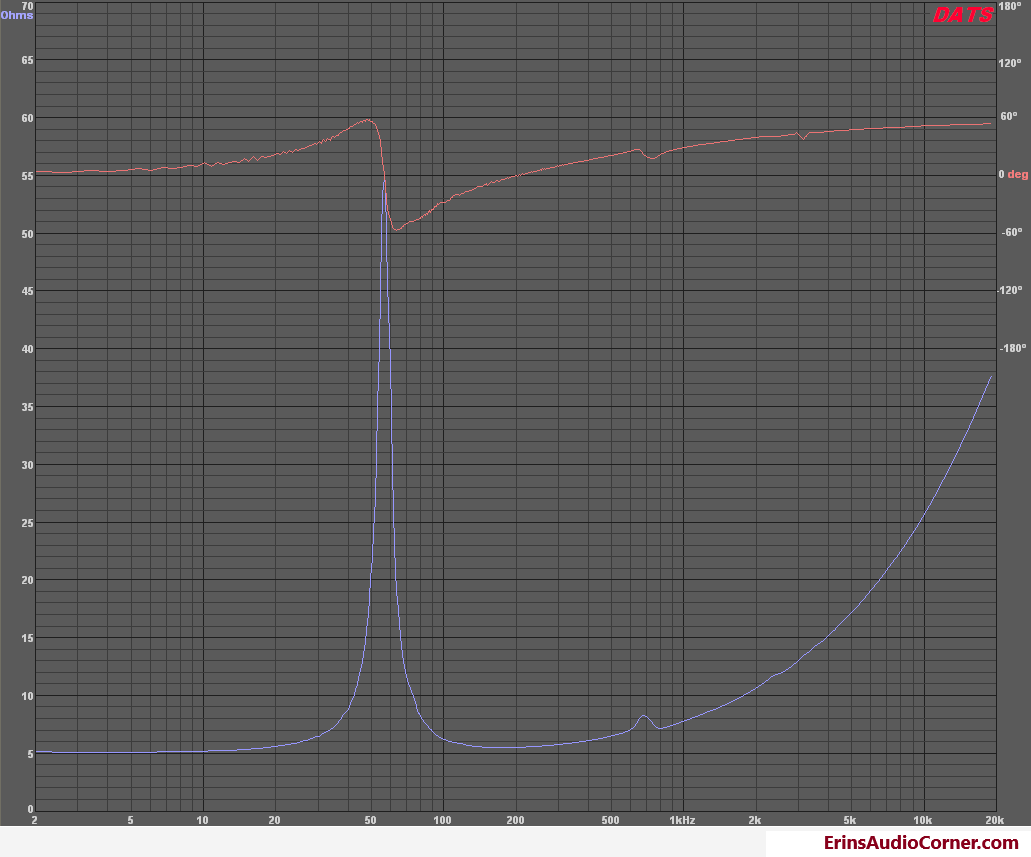
Frequency Response
Frequency Response and the following Harmonic Distortion measurements were taken using Dayton’s OmniMic measurement system.
The frequency response measurements below are on-axis (0 degrees) and off-axis (15, 30, 60 degrees), measured at 2.83v/1m.
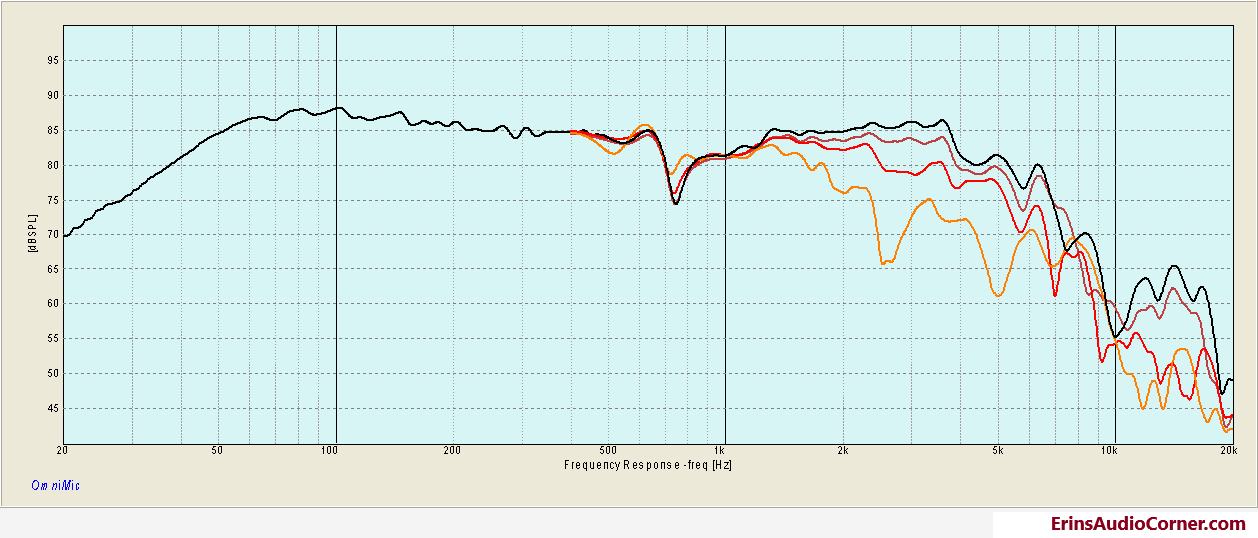
Harmonic Distortion
The following HD graphs are done in the nearfield, emulating the following SPL levels at 1 meter: 90dB, 96dB, and 102dB in order.
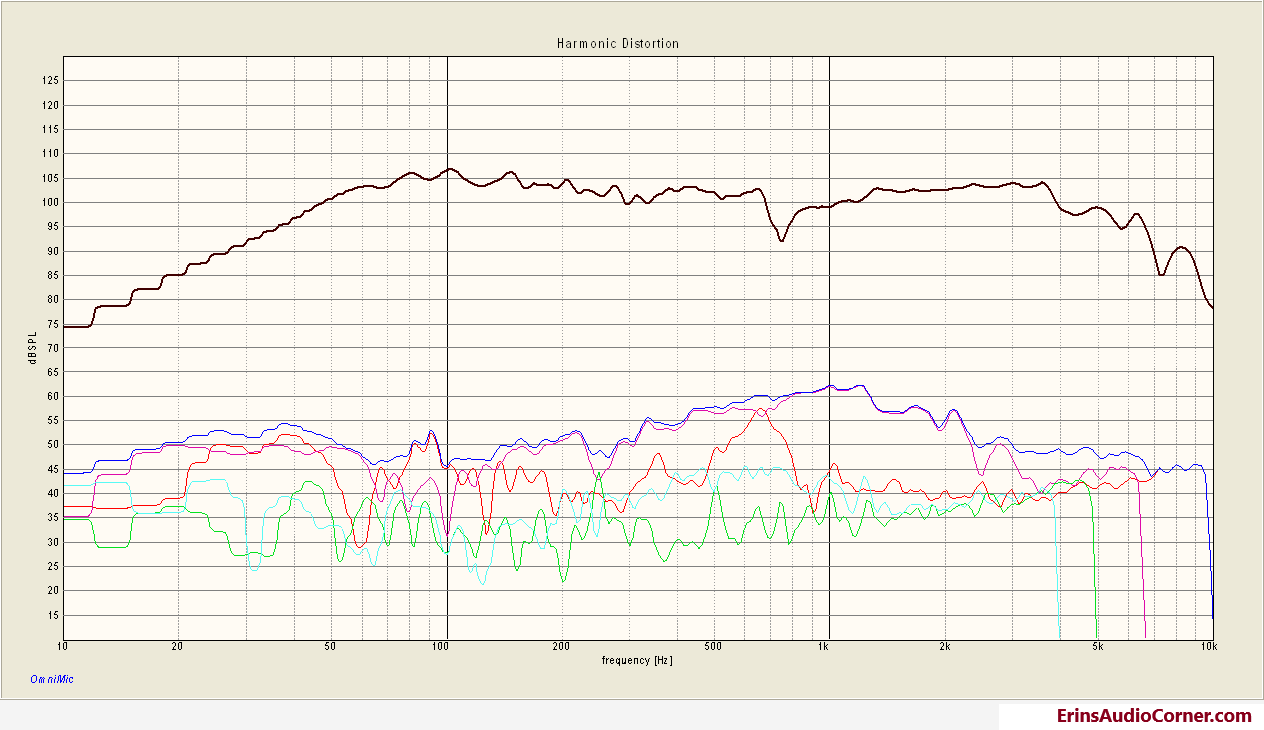
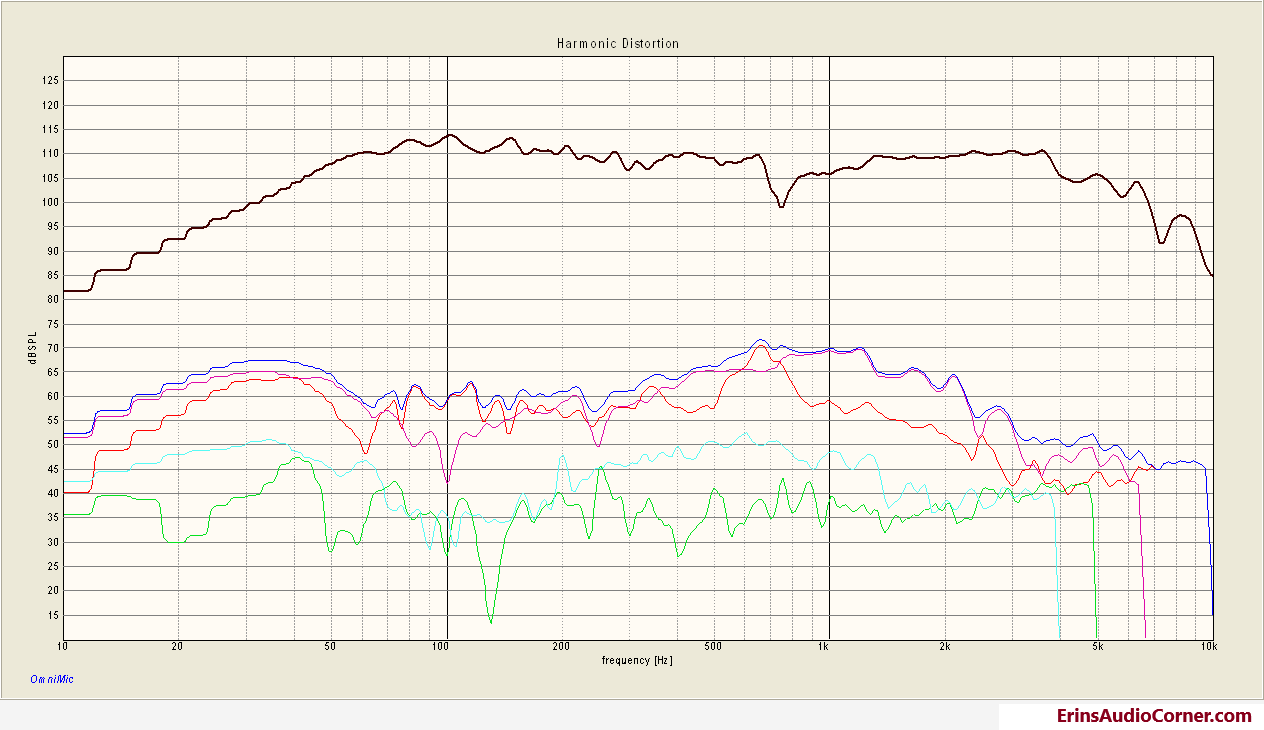
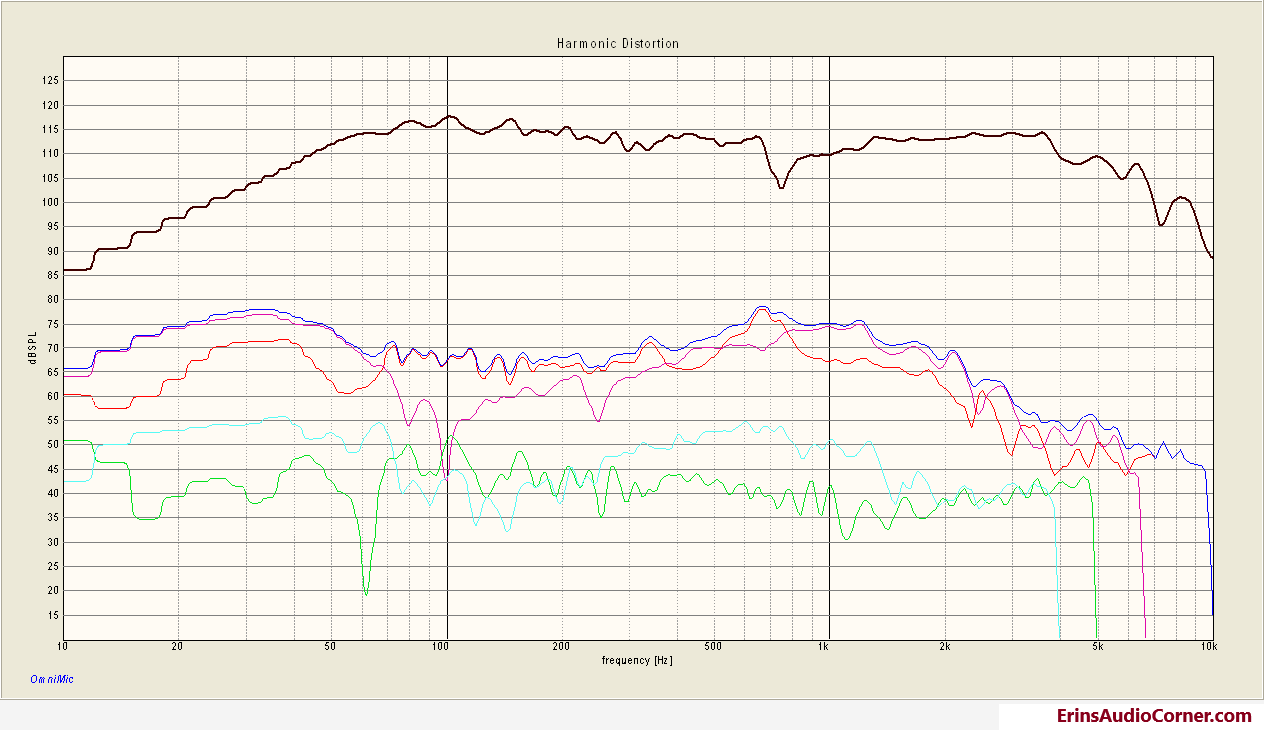
Thoughts
Frequency Response: Average measured sensitivity in it’s primary range is approximately 86dB @ 2.83v/1m. On the low end, the Qts indicates a high value of 1.087 and a Vas of approximately 0.50 cubic feet, which means this driver is likely built for an infinite baffle type install. According to JL’s literature, that’s indeed the case: “The ZR800-CW is a supremely powerful, dedicated mid-bass driver designed for infinite-baffle or door-mounted custom installations.” This driver exhibits fairly linear response up until about 500hz where some issues occur. Looking at the impedance graph you can see a resonance show up in the 600-700hz region. This shows up in the FR with the strong dip just around 700hz. From 700-1200hz there’s odd behavior, and above 1200hz the response gets better.
Harmonic Distortion: I’ve provided HD measurements at (3) different SPL levels: 90, 96, and 102dB. The reason I do this is to see the general trend of how distortion increases with output. But since this is a midbass and likely will be pushed hard, I’ll evaluate the 102dB level distortion. The 3% THD mark is hit at just under 40hz. From 60-300hz, where these are most likely to be used, the distortion level is approximately 0.60%. At 500hz the THD reaches 1% and rides that range until it begins to fall at ~1200hz.
Bottom line: As a dedicated midbass - in a 3-way type system or a 2-way using a ‘wideband’ driver - this is an excellent choice. From the data, it is seen you can reach pretty hefty levels with very little distortion (less than 1% THD) crossing this driver between 50/60hz to about 300/400hz. This coincides with the FR data as well. I wouldn’t recommend crossing this higher than 500hz, though because the response gets pretty rough above this point and it would be hard to implement a crossover here. Regarding the low end output, keep in mind cabin gain comes in to play in most cars at about the 60-70hz region and increases the SPL below this point by ~12dB/octave. Which means some people may be able to run these without a dedicated subwoofer and be plenty happy … obviously this is very much user dependent.
End
If you like what you see here and want to help me keep it going, there’s a Paypal Contribute button at the bottom of each page. Just provide what you can. Every little bit is truly appreciated.
You can also join my Facebook and YouTube pages via the links at the bottom of the page if you’d like to follow along with updates.
Thanks!

